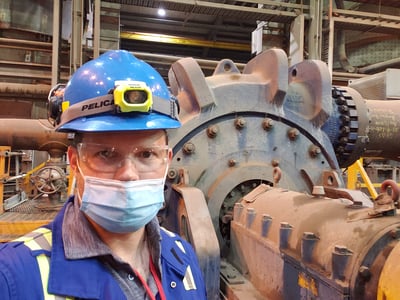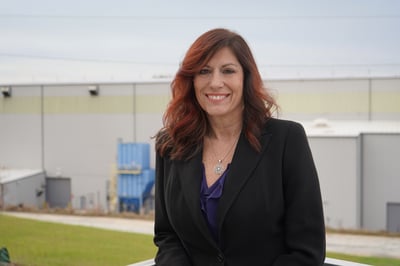
Is it time for your pump’s scheduled maintenance? Do you have the replacement parts on hand? How will you know what to order? It’s all in the bill of materials (BOM). The key is making sure your BOMs are up to date. We sat down with Strategic Account Manager Matthias Hofsink and Customer Service Manager Kelly Wiggins to discuss the critical connections between an accurate BOM, minimal unplanned downtime, and customer confidence in their on-hand spare parts supply.
Let’s start by getting to know you both. What is your background in the industry and with KSB?
Matthias Hofsink: I have been with KSB for two and a half years — in Fort McMurray, Alberta — as Account Manager for one of the leading oil sands companies. I moved from the Netherlands to Canada. Before working at KSB, I worked for Siemens and Solar Turbines as a Field Service Engineer. Working in field service, I have traveled to every continent fixing compressors and turbines. Before that, I was a Maintenance Consultant helping companies optimize maintenance routines. I have a bachelor’s degree in engineering.
Kelly Wiggins: I have been with KSB for 16 years — with 14 of those years in Customer Service. Before KSB, I worked in aftermarket support for the ASRS and automotive industries. My career has been devoted to aftermarket and sales support for the customer.
 Matthias Hofsink
Matthias Hofsink
What is a bill of materials (BOM)?
Matthias: A bill of materials lists the components that make up our pumps. It includes specifics regarding quantities and materials and is accompanied by drawings. There is often a legal requirement to have drawings and BOM’s “as-built” — meaning changes are tracked in real time and what is installed is identical to what is in the customer’s maintenance management program. Accurate part and serial numbers are important because the information is used to make better decisions about manufacturing the part efficiently and cost-effectively and to understand what’s out there with the customer, so we can make safe, reliable decisions for production and maintenance. It also helps customers order the correct spare parts to have on hand for effective maintenance.
Why is it essential for you and your customer to work from the same — most current — BOMs and drawings?
Matthias: The main advantage of using the most current drawings and BOM is that the drawings are as-built — meaning they are up to date with all changes — resulting in confidence in the ordering process. The customer knows that when they order a part, it will be the correct one in form and function. Using a current BOM helps maintain inventory levels, assists in the standardization of parts, and improves forecasting accuracy. It also ensures that the customer and their KSB representative are talking about the same parts.
If the BOM is not accurate, part wear can be miscalculated — rendering the forecast plan inaccurate. Unification and standardization are possible, but without accurate BOMs, the customer will not be aware, which leads to overstock and obsolescence. Planned maintenance can be disrupted if the proper part isn’t in inventory, leading to unplanned downtime. Working from an accurate BOM and drawings eliminates the potential for incorrect orders — saving time and money.
What is the process for the customer to make sure they have updated the BOMs and drawings correctly?
Matthias: The best way to keep everything up to date is to contact their local representative or KSB GIW, Inc. Customer Services.
 Kelly Wiggins
Kelly Wiggins
Cost is a continual concern — how does KSB help their customers navigate the process?
Kelly: KSB’s mission is to help our customers increase efficiency in their equipment and processes. Maintaining an up-to-date BOM helps with efficiency by giving customers vital information at a glance. For example, a customer can move pumps to alternate positions. Pumps can get moved to a different line or job site altogether. In this case, it is essential to have tag reassignment to ensure as-built BOMs cover the processing plant.
The gemba method — in lean manufacturing, gemba argues that problems are visible. The gemba walk takes management to the front lines to identify waste — can assist in understanding what pumps a customer is running at their facility. It’s not failproof, but it can identify gaps in the customer’s historical files of what they believe they have on site and what they have. A KSB pump expert to work with the customer is value added in this situation.
